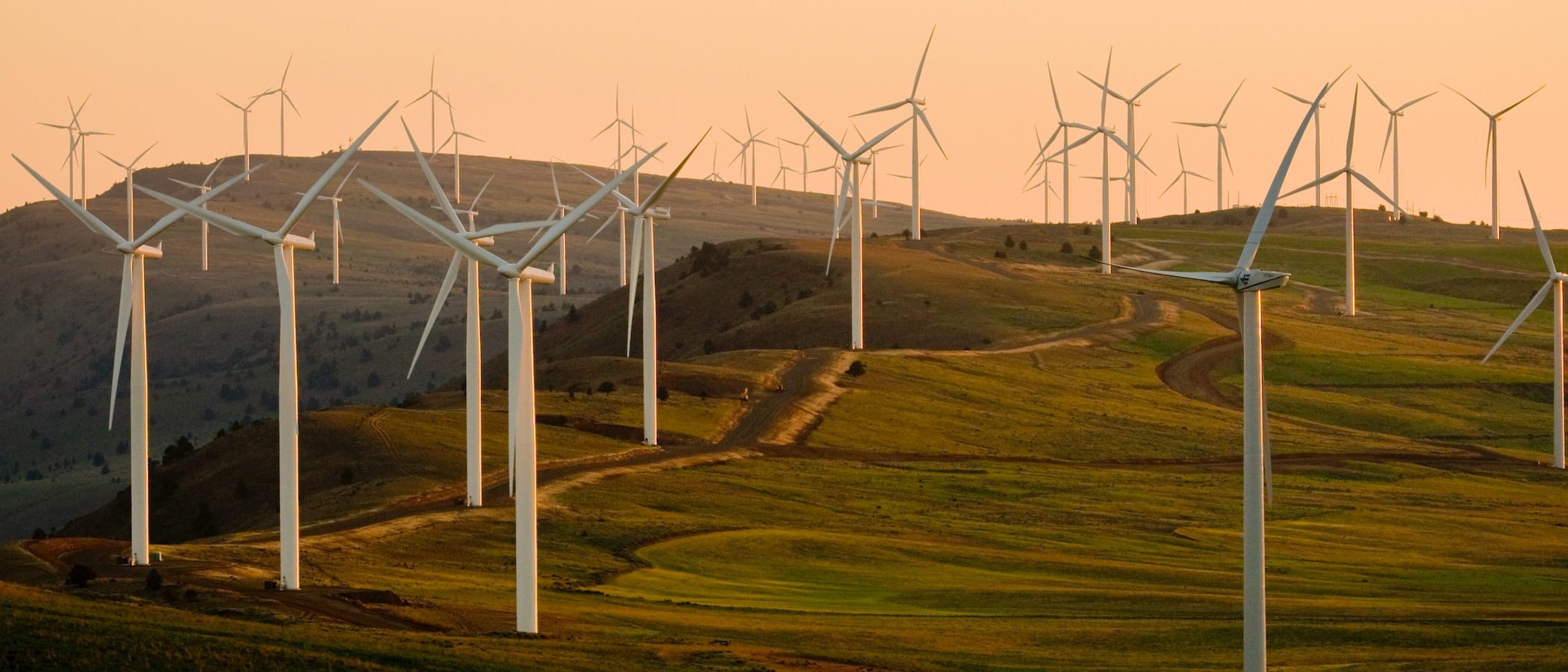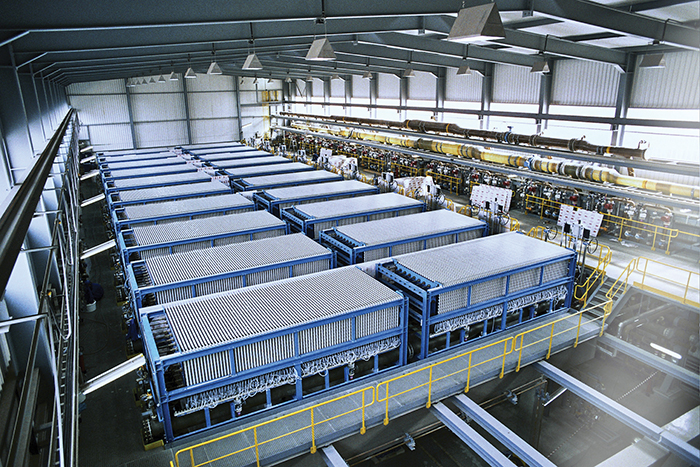Newfoundland Takes a Bold Leap Toward a Sustainable Energy Future
Environmental Impact Guidelines Pave the Way for an Ambitious Green Hydrogen Initiative in Botwood
In a move that underscores Newfoundland and Labrador’s commitment to decarbonization, the province’s Department of Environment and Climate Change released detailed Environmental Impact Statement (EIS) guidelines earlier this morning. These guidelines mark the formal kickoff for the Green Energy Hub project—a transformative endeavor set to harness renewable wind power to produce green hydrogen and ammonia on an unprecedented scale in the Botwood area.

Setting the Stage for an Energy Revolution
At the heart of this initiative is Exploits Valley Renewable Energy Corporation (EVREC), a subsidiary of industry pioneer Abraxas Power Corp. The project’s audacious design envisions integrating more than 3 gigawatts of onshore wind capacity with advanced energy and molecular storage facilities. According to the project details, this setup is expected to generate approximately 180,000 tons of green hydrogen and 1,000,000 tons of green ammonia annually. Such figures position EVREC as a front-runner in what is widely regarded as one of the most pivotal sectors in the global energy transition.

Green Hydrogen is produced directly using renewable energy, typically via water electrolysis. Green Ammonia is a derivative product, synthesized by combining Green Hydrogen with nitrogen from the air through a process (like Haber-Bosch) also powered by renewables. Essentially, Green Ammonia serves as a stable, transportable carrier for Green Hydrogen or as a green fertilizer feedstock.
An industry expert familiar with the project emphasized the revolutionary nature of integrating renewable power with downstream chemical production. “The scope and scale of this project provide a holistic solution to renewable energy challenges that have long hindered full-scale decarbonization,” the expert noted. This sentiment is shared across the board, with stakeholders lauding the initiative for its potential to stimulate job creation and accelerate regional economic growth.
Meticulous Environmental Review: Balancing Innovation and Integrity
Central to the project’s progress is the recently released EIS guidance—a comprehensive framework aimed at assessing the environmental benefits and potential risks throughout the construction, operation, and eventual decommissioning phases. The document outlines strategies to mitigate adverse ecological impacts while addressing public concerns with transparency and precision.
An Environmental Impact Statement (EIS) is a document required by law for certain projects to assess their potential positive and negative environmental effects before a decision is made. The EIS process examines impacts on resources like air, water, wildlife, and cultural sites, involving public input to inform agency decision-making.
The EIS not only identifies the environmental variables at play—ranging from water resource management to air quality and biodiversity—but also establishes robust measures to ensure that every phase of the project adheres to stringent environmental standards. “This is a clear demonstration of Newfoundland’s desire to lead by example in the transition to clean energy,” commented a local environmental analyst, underscoring the importance of the guidelines in upholding both sustainability and community trust.
Public consultations are slated to begin shortly, ensuring that every stakeholder—from local residents to global investors—has access to detailed project information. This proactive engagement is critical in reinforcing the commitment to responsible development and balanced ecosystem management.
A Multifaceted Vision: Economic Impact and Global Trade
The ambitious Green Energy Hub project is not only a technological marvel but also a major economic catalyst. Spanning over 300 square kilometers of crown lands granted for this purpose, the project promises to redefine the economic landscape of central Newfoundland. With plans to develop dedicated port infrastructure, EVREC is poised to become a significant player in the global trade of green fuels.
Projected growth of the global green hydrogen market size over the next decade.
| Source | Base Year | Base Year Value (USD) | Forecast Year | Forecast Value (USD) | CAGR (%) |
|---|---|---|---|---|---|
| Grand View Research | 2024 | $7.98 Billion | 2030 | $60.56 Billion | 38.5% |
| IMARC Group | 2024 | $1.69 Billion | 2033 | $62.40 Billion | 46.89% |
| Roots Analysis | 2024 | $1.5 Billion | 2035 | $125.3 Billion | 49.5% |
| MarketsandMarkets | 2023 | $1.1 Billion | 2030 | $30.6 Billion | 61.1% |
| Precedence Research | 2024 | $8.78 Billion | 2034 | $199.22 Billion | 41.46% |
| Introspective Market Research | 2023 | $3.8 Billion | 2032 | $78.13 Billion | 39.83% |
| Coherent Market Insights | 2024 | $2.5 Billion | 2033 | $12.9 Billion | 15.8% |
| Fact.MR | 2023 | $6.2 Billion | 2033 | $94 Billion | 31.3% |
Economic forecasts based on the project’s scale hint at a substantial boost to the provincial economy, driven by new job opportunities and extensive capital investments. Among the notable financial signals, industry observers point to the fact that Abraxas Power has successfully secured over US$9 billion in capital projects during the past year—a figure that reinforces investor confidence in their commitment to achieving cost efficiency and market leadership.
A veteran in renewable project finance remarked, “The integration of large-scale wind resources with end-to-end production and export capabilities could set new benchmarks in the green energy sector. The project’s potential to create a self-sustaining regional economy is particularly exciting for long-term investors.” This optimistic view reflects a broader market sentiment that sees such infrastructural innovations as the bedrock of future decarbonization strategies.
Investment and Innovation: Navigating a Complex Market
Globally, the green hydrogen market is attracting significant attention from governments and private sector leaders alike, driven by the urgent need to reduce carbon emissions in hard-to-decarbonize industries. EVREC’s commitment to harness renewable energy resources in a cost-effective and environmentally sensitive manner positions it uniquely amid a rapidly evolving competitive landscape. The project’s ambitious targets—supported by robust pre-construction activities such as detailed engineering studies and wind resource measurement—aim to push green hydrogen toward cost parity with conventional methods.

Green hydrogen is produced through water electrolysis, a process where an electrolyzer uses electricity to split water (H₂O) into hydrogen (H₂) and oxygen (O₂). To qualify as "green," the electricity powering this process must come entirely from renewable energy sources like solar or wind power.
Yet, the path is not without its challenges. The substantial capital outlay, estimated in the range of multi-billion-dollar investments, along with technological hurdles associated with scaling electrolysis and integrating complex energy storage systems, present a cautionary tale even as the project marches forward. Nonetheless, analysts are quick to point out that the unique geographic advantages—abundant wind resources and strategic access to export markets via dedicated port facilities—could mitigate many of these risks, setting the stage for a resilient long-term growth trajectory.
Comparison of levelized cost of hydrogen (LCOH) production methods (e.g., Green vs. Grey/Blue Hydrogen), current and projected.
Comparison of Levelized Cost of Hydrogen (LCOH) Production Methods
| Production Method | Current LCOH (2023-2024) | Projected LCOH | Projection Timeframe | Key Notes |
|---|---|---|---|---|
| Grey Hydrogen (No CCS) | $1.00 - $3.76/kg | Stable, may increase with carbon pricing | 2030-2050 | Currently cheapest method, facing carbon pricing pressure |
| Blue Hydrogen (With CCS) | $1.64 - $4.70/kg | 2030-2050 | Transitional technology; costs dependent on natural gas prices and CCS efficiency | |
| Green Hydrogen (Renewables) | $2.50 - $12.00/kg | $1.10 - $3.50/kg (2030) $1.00 - $5.09/kg (2050) | 2030-2050 | Expected significant cost reduction due to cheaper renewables and electrolyzers |
Charting the Future: Strategic Milestone in Global Decarbonization
As Newfoundland and Labrador embarks on this transformative journey, the Green Energy Hub project stands as a beacon of innovative energy policy and strategic economic planning. The EIS guidelines have not only formalized the project’s commitment to environmental stewardship but have also opened the door for an inclusive dialogue with community members, industry stakeholders, and international investors.
In summary, EVREC’s integrated approach—combining wind power, green hydrogen and ammonia production, and export-focused infrastructure—illustrates an ambitious blueprint for tackling global energy challenges. With regulatory support firmly in place and vigorous pre-construction activities underway, the province is poised to become a critical node in the global green energy supply chain. As this landmark project progresses, market watchers and professional traders alike will be keenly observing how this revolutionary development reshapes both regional economic fortunes and the broader landscape of sustainable energy production.
Looking Ahead The unfolding of the Green Energy Hub project signals more than just an environmental initiative—it heralds a potential paradigm shift in how regions leverage natural resources for sustainable development. As environmental assessments mature and further detailed project plans are unveiled, industry insiders remain cautiously optimistic about EVREC’s ability to transform Newfoundland and Labrador into a cornerstone of the emerging global hydrogen economy.
